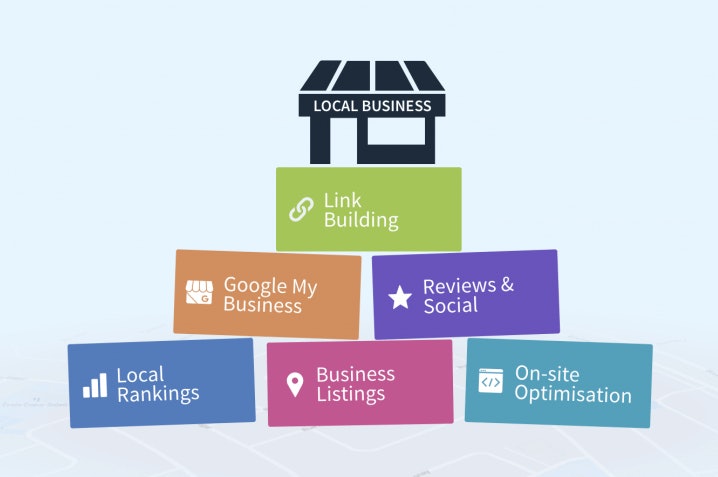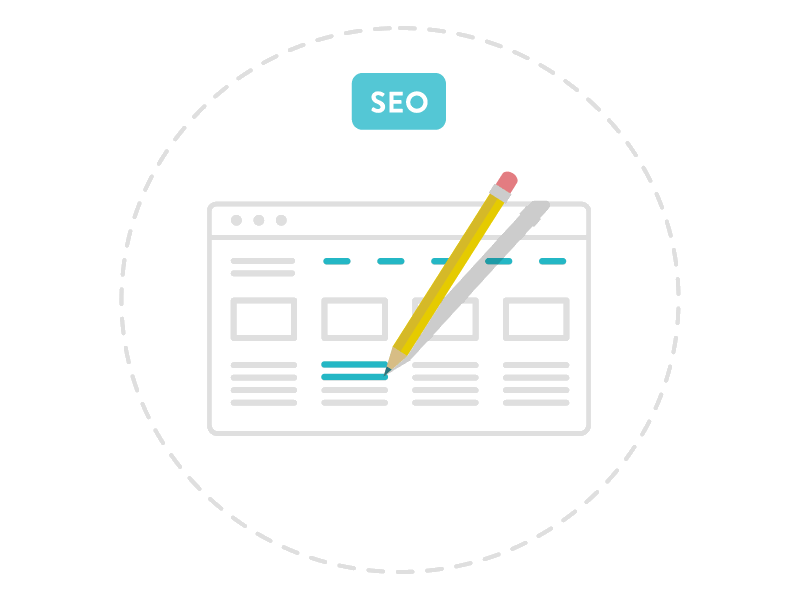Many optimizers out there, on Social Media platforms and Internet Marketing/SEO forums, like to downplay the importance of local SEO. Local SEO is often overlooked and viewed as being not as valuable or as beneficial as that of a full international SEO campaign. This is totally inaccurate.
In fact, Local SEO is a long-term marketing campaign that entails a goal with KPIs, that requires content creation and promotion in order to promote your brand at the local level.
Local SEO is tedious and requires lengthy, diversified strategies. But all that’s required to manage your own campaign is patience, time, consistency, and dedication to your campaign.

Will You Benefit from Local SEo?
You business owners who do business at a physical location will benefit the most from starting and managing a long-term local SEO campaign. But just because you don’t have a brick and mortar shop, doesn’t mean you can’t benefit from a local SEO campaign.
The biggest requirement is that you have an online presence by way of a website. It doesn’t have to be anything fancy. You can purchase a domain name and use a WordPress.com account for your hosting. Pick your favorite free theme, add some copy optimized with local keywords, and you should be good to go.
Your ultimate goal for your local SEO campaign has to be gaining a larger, local customer base. And in order for this to happen, your website has to be worth visiting. An uninviting website can be extremely detrimental to your campaign.
Getting Started?
Before you get started you have to understand search engines and be honest about whether you think your site even deserves to be positioned on Google’s first page.
- Understanding Search Engines – Prior to getting to the meat of the campaign, you have to understand what it is your working with. Before you can expect to rank on Google or Yelp or Yahoo or Bing, you have to know how these babies work.
- Is your site worth it? – Does your website deserve to be positioned first? Imagine that you are the customer searching for your product or service. Does your site help inform the customer or do a good job to lead them to make a purchase? Before really getting into this Local SEO project, you must make sure that your site is worthy for the search engines. Otherwise this effort is going to go unnoticed.

Step 1: Gather Keywords
Your site should contain content that is relevant to what it is you want to rank for. For example, if you want to rank for house cleaning in Raleigh, your page should contain content that is relevant to house cleaning in Raleigh. But this is really jumping the gun.
Your first step before determining your keywords is to perform keyword research. Don’t just assume you know what your customers are searching to find your services or products. You really have to dig into the research to figure out the most popular search terms for your customers.
I’ve built a couple tools with Google Sheets like this Long Tail Keyword Prospector, which you can take the keywords created there to plug into a resource like this one. From there, you can use my Local Keyword Wrapper to localize each of your keywords. I would also recommend that you keep track of your keyword ideas in a spreadsheet like this one. I also recommend that you check out Neil Patel’s keyword research tools.
So, go ahead and dig into your favorite keyword research tools and gather some data.
By the way, it is significantly easier to rank for long tail keywords that it is for head terms. Long tail keywords are those three and four keyword phrases which are very, very specific to whatever you are selling. Face it – it’s no use trying to compete for the top spot when you’re competing against massive sites like Wikipedia. Your best bet to rank is to use the long tail keyword method and win over clients that way. I’ve also built a Long Tail Keyword Prospector tool that will help you at least brainstorm more long tail phrases and ideas.
Once you’ve determined your keywords, you can start building and optimizing your website with rich, high quality, well optimized, content. This can include blogs, videos, infographics, images – whatever it is, it needs to be optimized for both your users and the robots of the search engine. Be sure to include your company name, address and phone number.

Step 2: Build Links
In the world of local SEO, local citations are the equivalent of backlinks. In fact, local citations are an absolute must in order to get ranked over your competitors. But you must make sure that your information is 100% consistent across all channels.
A local citation is your name, address, and phone number (NAP) listed in a local business directory, online.
You should use search operators to find lists of directories in your area. From there, you can either sign up to each of these local citations yourself, or you can outsource this tedious job to someone on upwork for about $5 per hour. The only thing you need to do is make sure your NAP is consistent across the entire local citation building campaign.
Step 3: Use GMB, Yelp, & Facebook
Many local businesses don’t have a website and simply rely on their Google My Business (GMB), Yelp or Facebook page to develop new leads and drive foot traffic into their brick and mortar shop. However, many businesses also set these accounts up and leave them be. Keeping up with those accounts can provide a lot of value to your business.
Your customers can leave reviews of your products and services. You can have a more personal relationship with your leads and customers. You can post pictures and videos of your business. All of these can shed a positive light on your company and show that your business is trustworthy.
But your accounts have to be optimized just as much as your website – if you have one, of course. This includes optimizing with the keywords from your research.
Google My Business (GMB) – Your Google My Business is one of the most important business listings that you can create and maintain. There a several ways to optimize your Google listing.
- The first thing you should do is make sure that you complete all of the information that Google asks for.
- Create regular posts about an event or sales or even a blog post you want to brag about.
- You can add a booking button with Google’s new booking button feature. Prospects can book your service right from your Google My Business listing.
- Questions and Answers is a great new tool that allows your customers and prospects to ask you questions publicly about your business.
- Your customers can leave reviews right on your site, and, unlike Yelp, you can ask for them. But you must follow Google’s guidelines.
Yelp – Yelp has been the top review site for businesses for a long time. While restaurants are by far the most represented business, other local businesses can really take advantage. Here’s how:
- Just like with Google, the first thing you must do after claiming your business, is to make sure all of the information is filled out.
- Add photos of your business, of your services and products, of your team. Consumers love photos and the more you have the better.
- Respond to reviews, whether they are good or bad. This shows customers that you truly appreciate their feedback.
Facebook – Most people in the world are on Facebook. Luckily, with Facebook, it is extremely easy to connect with your prospects and build a relationship to convert your visitors into paying customers. Here’s how you do it:
- Create a custom vanity URL for your site to make it easier for consumers to find you. This is basically a username for your business listing.
- Fill out all of the information, but really look at filling the About Us section. Be sure to use the keywords from your research.
- Upload engaging pictures of your business and use a relevant image as your cover photo.
- Include a call to action button. Much like Google, you can add a book now button, which will lead your users to your site to check out or you can add a secure checkout right on your page.
- Post thoughts, blogs, and other relevant material frequently and encourage audience engagement.
To maximize your Local SEO efforts, you should create and optimize a Google My Business, Yelp, and Facebook business page. In fact, you should remember to optimize your accounts, the same way you optimize your website. Optimizing on these three sites, will provide you with a better chance of being found, leading to more leads and more business.
Step 4: Maintain
Here is where your efforts can either soar or flop. Building up your Local SEO campaign requires consistency, perseverance, dedication, and consistency. These four personal features will help drive your company and leads. One of the main reasons SEO fails is because business owners grow upset because they didn’t show any instant return. SEO runs on this thing called the slope of SEO. In an ideal world, the amount of work you put into your Local SEO campaign would immediately yield an equal result. Unfortunately it takes at least several months for most businesses to see an ROI on digital marketing.
SEO success doesn’t occur overnight, and it’s difficult to get success in a couple months. SEO takes constant love and attention. Without both, your SEO campaign will stop working.
This is where many business owners give up and start using Blackhat SEO techniques. Those who can’t manage their own SEO or Local SEO projects — tend to hire an SEO company to manage their Local SEO for them.For those of you who don’t have the necessary free time to manage a Local SEO campaign, this really isn’t a bad option.

Final Thoughts
I hope this post provided you with enough insight and information to help you get started. If you have questions and I hope that you do — I’ll be looking out for your comments, in the below commenting section of this guide.
If you’ve found this Local SEO 101 guide useful and have learned something new from this guide, then please share this article with your friends, on your favorite social platforms.

Recent Comments